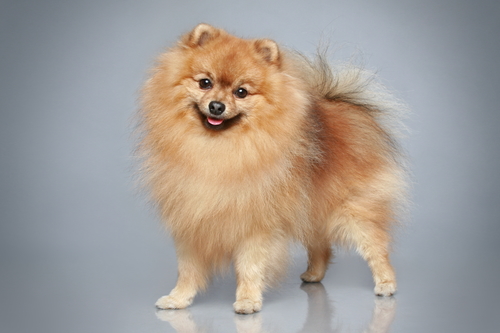
Whatever breed you own, did you know that it descended from the spitz?
It didn’t, of course, but that’s what Count Eberhand Zu Sayre Buffon thought back in 1750 when he wrote National History of Quadrupeds. Still, he wasn’t that far off if one considers the breeds that are related to the Spitz, including the Akita, Indian Spitz, Finnish Lapphund, Norrbottenspets, Chow Chow, Keeshond, Alaskan Malamute, Norwegian Buhund, Siberian Husky, American Eskimo Dog, Finnish Spitz, Icelandic Sheepdog, Schipperke, Pomeranian, Volpino, Norwegian Elkhound, Swedish Vallhund, Norwegian Lundehund, Samoyed, Japanese Spitz, and Shiba Inu – and those are just off the top of our heads. The AKC writes that estimates are that between 50 and 70 distinct spitz breeds exist.
In Germany alone, there is the German Wolfspitz, Giant German Spitz, Standard German Spitz, Small German Spitz, and Toy German Spitz, their functions spread out between being herding, hunting, and hauling dogs. It’s thought these particular Spitzes, (or in German, “Spitze”) were probably brought to northern Germany by those rascally Vikings during their pillaging and plundering stage in the Middle Ages. The dogs, taking a cue from their owners, did their own share of cavorting with saucy wenches of the canine variety, and it didn’t take long for the impact to be seen in dogs throughout Europe and the British Isles. Today, the FCI recognizes size varieties of Spitz mentioned earlier in this paragraph, but the smallest of the Spitze may be the Pomeranian which developed apart from the others.
Image: German Spitz dog by jagodka/Adobe
